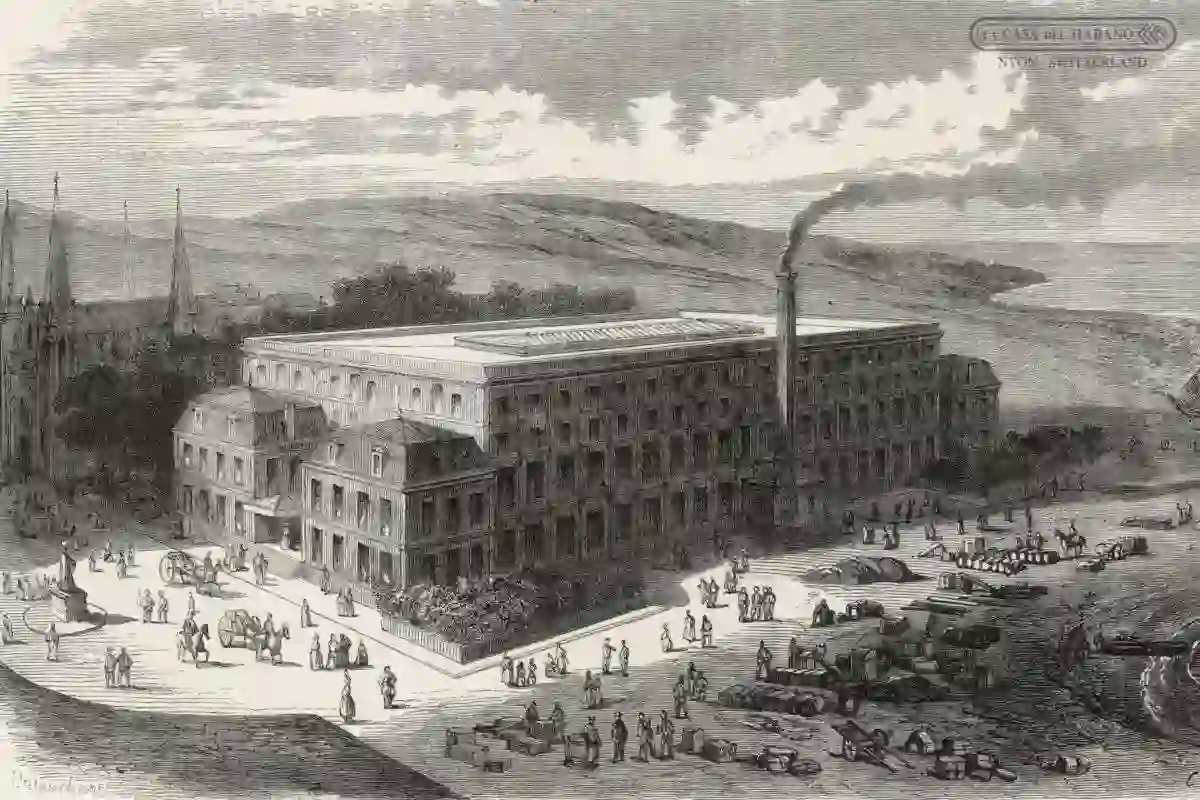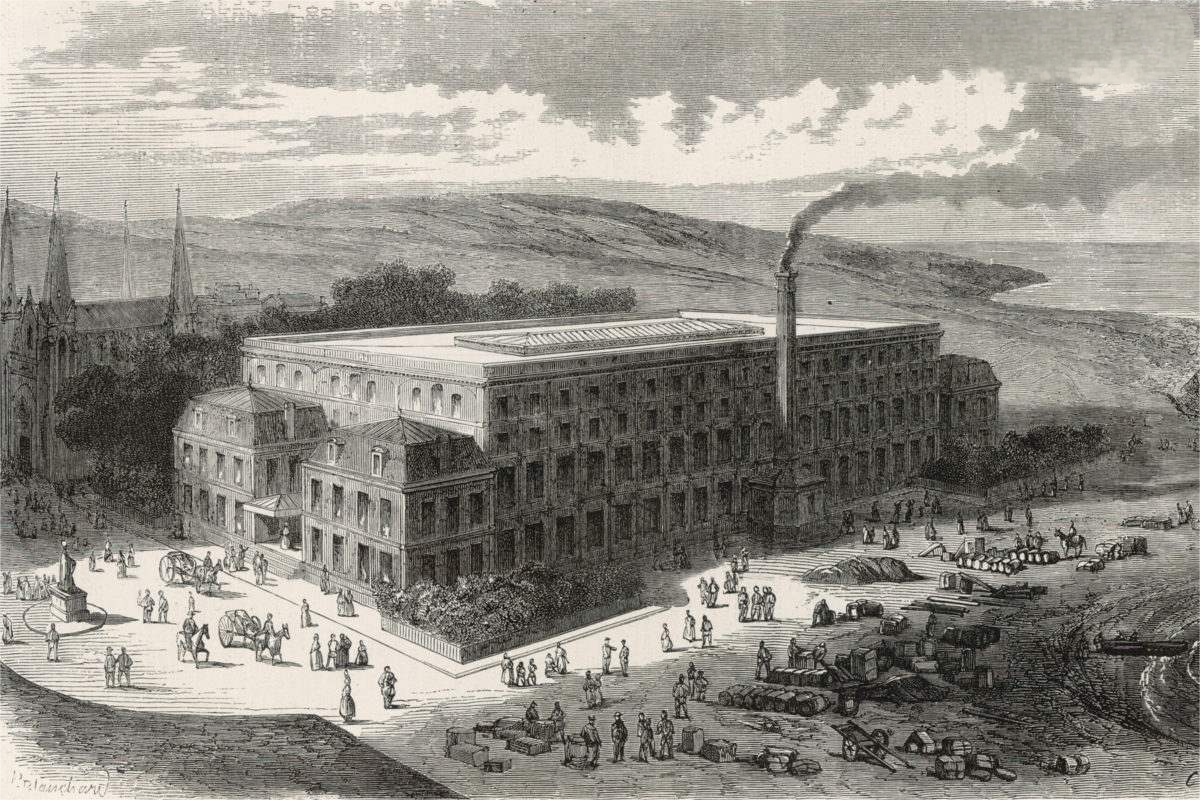
尽管目前 "乒乓球 "爱好者和 "乒乓球 "爱好者之间正在激烈争论 古巴雪茄 古巴仍然是整个烟草业的庇护所和领头羊。古巴雪茄史诗是不同时代和文明之间相遇、结盟和冲突的精彩故事。
传说克里斯托弗-哥伦布和他的手下在横渡大西洋时,在伊斯帕尼奥拉岛(现为海地和多米尼加共和国)和古巴遇到了一些特别的情况。他们在那里遇到了吸食一种用香蕉叶或棕榈叶包裹的奇怪植物混合物的人。后来,当哥伦布和他的水手们在古巴定居时,岛上的泰诺印第安人让他品尝了他们当地的雪茄配方,这种雪茄只需几片卷好的干烟叶。第一支古巴雪茄的雏形就这样与西方有了第一次接触,没过多久,它就被带到了旧大陆。西班牙和葡萄牙是它在欧洲的第一个目的地。1542 年左右,西班牙在古巴建立了第一家雪茄制造作坊。
全球工业的开端
L'古巴雪茄的历史这也是一个关于斗争、影响力和权力的故事。西班牙政府是第一个对古巴雪茄贸易实行垄断的国家。1717 年,西班牙政府甚至通过了一项法律,对与烟草及其副产品有关的一切事物(当然也包括雪茄)实行独家经营。后来,西班牙和英国在 1762 年爆发了战争,英国人在这场战争中占了上风,通过多种手段控制了哈瓦那。在整个占领期间,烟草贸易获得了完全的自由,并迅速繁荣起来。当西班牙在岛上重建飞地的和约签署时,古巴烟草和雪茄已经出口到世界各地,引起了许多人的兴趣和热情。
1797 年,卡巴纳斯成为第一个与西班牙国家垄断竞争的古巴私人雪茄品牌。这是哈瓦那第一个获得官方认可的手工雪茄品牌。后来,海梅-帕塔加斯(Jaime Partagás)继承了弗朗西斯科-卡巴纳斯的事业,于 1848 年创立了 "Flor de Cabanas"。他的雪茄最初是在卡巴纳斯的厂房里制作的,后来因为一场官司,合伙人分道扬镳。随后,Por Larranga 和 Punch 等品牌也分别于 1834 年和 1840 年加入了这家企业。至于卡巴纳斯这个先驱,它一直经营到 1962 年,这一年卡斯特罗政府将岛上的雪茄生产业收归国有。
伟大的革命
上世纪 60 年代初以前,古巴雪茄是所有雪茄爱好者的标杆。比那尔德里奥的土壤是种植烟草的主要产地,这里的烟草质量上乘。这是一个值得国家骄傲的问题,当地的烟草生产商一直非常谨慎地保证烟草的质量。古巴数百年来赖以在这一领域建立霸权的烟叶也是国家的骄傲。 炬 负责把它们变成雪茄。
尽管如此,菲德尔-卡斯特罗及其政府领导的政治革命还是在古巴市场引起了轩然大波。政府的大规模干预,特别是通过工业国有化,导致技术外流。许多当地生产商流亡国外,有时还带走了大量种子。约翰-肯尼迪总统实施的贸易禁运严重打击了古巴雪茄,使其失去了最大的市场。不过,这也有助于巩固古巴雪茄在这些地区的传奇地位。 最重要的是,它标志着一个新行业的诞生。
来自新世界的雪茄
卡斯特罗上台后,雪茄生产商纷纷离开古巴,前往牙买加、洪都拉斯、尼加拉瓜、加那利群岛、墨西哥和多米尼加共和国等地。特别是,他们找到了适合种植烟草的土壤,许多人甚至将商标转移到了那里。这导致了许多纠纷,其中一些纠纷通过成立一家拥有两个原产国的公司得到了解决。
在这方面,我们可以提到蒙特克里斯托,它在梅内德斯家族的支持下,迁往多米尼加共和国,在那里,它的品牌重塑使其在市场上占据了相当大的份额。 其最知名的产品包括 Romeo y Julieta、Cohiba、La Gloria Cubana、Partagás、H. Upmann 等。 Por Larranaga 也是洪都拉斯生产的。Punch 和 Hoyo de Monterrey 在洪都拉斯生产。
禁运之后,Padrón 和 Arturo Fuente 等古巴雪茄品牌恢复了声誉。何塞-佩潘-加西亚(José Pepin Garcia)等移民雪茄大师重新打造了 La Aroma de Cuba 等老品牌,使其成为现代经典。尽管如此,这些雪茄还是在尼加拉瓜生产,特别是通过著名的 "我父亲雪茄 "专营店生产。
总之
近几十年来,后卡斯特罗时期古巴的雪茄产业发生了重大变化。国有化导致资源集中和品牌淘汰。登喜路(Dunhill)和大卫杜夫(Davidoff)各奔东西。1966 年,菲德尔-卡斯特罗创建了科伊巴(Cohiba)公司,使用泰诺语生产烟草,并生产出革命的标志性雪茄。
从那时起 Cubatabaco决定哪些品牌能获得最好的烟草。标志性品牌如 高希霸, 蒙特克里斯托, 罗密欧与朱丽叶 和 H.乌普曼 普遍从中受益。
第二次世界大战后,苏联解体对古巴经济产生了负面影响。援助枯竭,古巴雪茄的统一性和总体质量下降,尤其是在 20 世纪 80 年代。如今,古巴雪茄业正努力恢复昔日的繁荣。雪茄约占古巴出口收入的 171TP3。
终于,在今天,古巴贸易的新自由,加上网上商店的新模式,使古巴雪茄成为每个人都能买到的雪茄。如果说古巴动荡的历史会唤醒你什么,那就是品尝古巴雪茄的欲望。

儘管目前 「乒乓球 」愛好者和 「乒乓球 」愛好者之間正在激烈爭論 古巴雪茄 古巴仍然是整個煙草業的庇護所和領頭羊。 古巴雪茄史詩是不同時代和文明之間相遇、結盟和衝突的精彩故事。
傳說克裡斯托弗-哥倫布和他的手下在橫渡大西洋時,在伊斯帕尼奧拉島(現為海地和多明尼加共和國)和古巴遇到了一些特別的情況。 他們在那裡遇到了吸食一種用香蕉葉或棕櫚葉包裹的奇怪植物混合物的人。 後來,當哥倫布和他的水手們在古巴定居時,島上的泰諾印第安人讓他品嘗了他們當地的雪茄配方,這種雪茄只需幾片捲好的乾煙葉。 第一支古巴雪茄的雛形就這樣與西方有了第一次接觸,沒過多久,它就被帶到了舊大陸。 西班牙和葡萄牙是它在歐洲的第一個目的地。 1542 年左右,西班牙在古巴建立了第一家雪茄製造作坊。
全球工業的開端
L'古巴雪茄的歷史這也是一個關於鬥爭、影響力和權力的故事。 西班牙政府是第一個對古巴雪茄貿易實行壟斷的國家。 1717 年,西班牙政府甚至通過了一項法律,對與煙草及其副產品有關的一切事物(當然也包括雪茄)實行獨家經營。 後來,西班牙和英國在 1762 年爆發了戰爭,英國人在這場戰爭中佔了上風,通過多種手段控制了哈瓦那。 在整個佔領期間,煙草貿易獲得了完全的自由,並迅速繁榮起來。 當西班牙在島上重建飛地的和約簽署時,古巴煙草和雪茄已經出口到世界各地,引起了許多人的興趣和熱情。
1797 年,卡巴納斯成為第一個與西班牙國家壟斷競爭的古巴私人雪茄品牌。 這是哈瓦那第一個獲得官方認可的手工雪茄品牌。 後來,海梅-帕塔加斯(Jaime Partagás)繼承了法蘭西斯科-卡巴納斯的事業,於1848年創立了 “Flor de Cabanas”。 他的雪茄最初是在卡巴納斯的廠房裡製作的,後來因為一場官司,合夥人分道揚鑣。 隨後,Por Larranga 和 Punch 等品牌也分別於 1834 年和 1840 年加入了這家企業。 至於卡巴納斯這個先驅,它一直經營到 1962 年,這一年卡斯特羅政府將島上的雪茄生產業收歸國有。
偉大的革命
上世紀 60 年代初以前,古巴雪茄是所有雪茄愛好者的標杆。 比那爾德里奧的土壤是種植煙草的主要產地,這裡的煙草品質上乘。 這是一個值得國家驕傲的問題,當地的煙草生產商一直非常謹慎地保證煙草的品質。 古巴數百年來賴以在這一領域建立霸權的煙葉也是國家的驕傲。 炬 負責把它們變成雪茄。儘管如此,菲德爾-卡斯特羅及其政府領導的政治革命還是在古巴市場引起了軒然大波。 政府的大規模干預,特別是通過工業國有化,導致技術外流。 許多當地生產商流亡國外,有時還帶走了大量種子。 約翰-甘迺迪總統實施的貿易禁運嚴重打擊了古巴雪茄,使其失去了最大的市場。 不過,這也有助於鞏固古巴雪茄在這些地區的傳奇地位。 最重要的是,它標誌著一個新行業的誕生。 來自新世界的雪茄 卡斯特羅上臺後,雪茄生產商紛紛離開古巴,前往牙買加、宏都拉斯、尼加拉瓜、加那利群島、墨西哥和多明尼加共和國等地。 特別是,他們找到了適合種植煙草的土壤,許多人甚至將商標轉移到了那裡。 這導致了許多糾紛,其中一些糾紛通過成立一家擁有兩個原產國的公司得到了解決。 在這方面,我們可以提到蒙特克裡斯托,它在梅內德斯家族的支援下,遷往多明尼加共和國,在那裡,它的品牌重塑使其在市場上佔據了相當大的份額。 其最知名的產品包括 Romeo y Julieta、Cohiba、La Gloria Cubana、Partagás、H. Upmann 等。 Por Larranaga 也是宏都拉斯生產的。 Punch 和 Hoyo de Monterrey 在宏都拉斯生產。 禁運之後,Padrón 和 Arturo Fuente 等古巴雪茄品牌恢復了聲譽。 何塞-佩潘-加西亞(José Pepin Garcia)等移民雪茄大師重新打造了 La Aroma de Cuba 等老品牌,使其成為現代經典。 儘管如此,這些雪茄還是在尼加拉瓜生產,特別是通過著名的 “我父親雪茄 ”專營店生產。總之
近幾十年來,後卡斯特羅時期古巴的雪茄產業發生了重大變化。 國有化導致資源集中和品牌淘汰。 登喜路(Dunhill)和大衛杜夫(Davidoff)各奔東西。 1966 年,菲德爾-卡斯特羅創建了科伊巴(Cohiba)公司,使用泰諾語生產煙草,並生產出革命的標誌性雪茄。
從那時起 Cubatabaco決定哪些品牌能獲得最好的煙草。 標誌性品牌如 高希霸, 蒙特克裡斯托, 羅密歐與朱麗葉 和 H.烏普曼 普遍從中受益。
第二次世界大戰後,蘇聯解體對古巴經濟產生了負面影響。 援助枯竭,古巴雪茄的統一性和總體品質下降,尤其是在 20 世紀 80 年代。 如今,古巴雪茄業正努力恢復昔日的繁榮。 雪茄約佔古巴出口收入的 171TP3。
終於,在今天,古巴貿易的新自由,加上網上商店的新模式,使古巴雪茄成為每個人都能買到的雪茄。 如果說古巴動蕩的歷史會喚醒你什麼,那就是品嘗古巴雪茄的慾望。

Despite the fact that there is currently a heated debate between "table tennis" lovers and "table tennis" lovers of Cuban cigars, Cuba remains a sanctuary and a leader in the entire tobacco industry. The Cuban Cigar Epic is a fascinating story of encounters, alliances, and conflicts between different eras and civilizations.
Legend has it that Christopher Columbus and his men encountered some special circumstances on the island of Hispaniola (now Haiti and the Dominican Republic) and Cuba while crossing the Atlantic. There they met people who smoked a strange mixture of plants wrapped in banana or palm leaves. Later, when Columbus and his sailors settled in Cuba, the island's Taíno Indians gave him a taste of their local cigar recipe, which required only a few dried tobacco leaves. The first Cuban cigar had its first contact with the West, and it was not long before it was brought to the Old World. Spain and Portugal were its first destinations in Europe. Around 1542, Spain established its first cigar-making workshop in Cuba.
The beginning of a global industry
The history of L'Cuban cigar is also a story of struggle, influence and power. The Spanish government was the first country to impose a monopoly on the Cuban cigar trade. In 1717, the Spanish government even passed a law exclusively regulating everything related to tobacco and its by-products, including, of course, cigars. Later, a war broke out between Spain and England in 1762, in which the British gained the upper hand and took control of Havana by several means. Throughout the occupation, the tobacco trade gained complete freedom and quickly prospered. By the time Spain signed the peace treaty to re-establish its enclave on the island, Cuban tobacco and cigars had been exported all over the world, arousing the interest and enthusiasm of many.
In 1797, Cabanas became the first Cuban private cigar brand to compete with the Spanish state. This is the first handmade cigar brand in Havana to be officially recognized. Later, Jaime Partagás inherited Francisco Cabanas's business and founded the "Flor de Cabanas" in 1848. His cigars were originally made in the Cabanas factory, but later the partners parted ways due to a lawsuit. Subsequently, brands such as Por Larranga and Punch joined the business in 1834 and 1840, respectively. As for Cabanas, it operated until 1962, when Castro's government nationalized the island's cigar industry.
The Great Revolution
Until the early '60s, Cuban cigars were the benchmark for all cigar aficionados. The soil of Pinar del Río is the main source of tobacco cultivation, and the tobacco here is of high quality. This is an issue of national pride, and local tobacco producers have always been very careful to ensure the quality of their tobacco. The tobacco leaf, on which Cuba has relied for centuries to establish its hegemony in this area, is also the pride of the country. Torches are responsible for turning them into cigars.Still, the political revolution led by Fidel Castro and his government caused an uproar in the Cuban market. Large-scale government interventions, particularly through the nationalization of industry, led to an exodus of technology. Many local producers went into exile, sometimes taking large quantities of seeds with them. The trade embargo imposed by President John F. Kennedy hit Cuban cigars hard, depriving it of its largest market. However, it also helped to cement the legendary status of Cuban cigars in these regions. Most importantly, it marks the birth of a new industry.
Cigars from the New World
After Castro came to power, cigar producers left Cuba and traveled to Jamaica, Honduras, Nicaragua, the Canary Islands, Mexico and the Dominican Republic. In particular, they found suitable soil for growing tobacco, and many even transferred their trademarks there. This has led to a number of disputes, some of which have been resolved through the establishment of a company with two countries of origin.
In this regard, we can mention Montecristo, which, with the support of the Menéndez family, moved to the Dominican Republic, where its rebranding allowed it to occupy a considerable share of the market. Its most well-known products include Romeo y Julieta, Cohiba, La Gloria Cubana, Partagás, H. Upmann, among others. Por Larranaga is also produced in Honduras. Punch and Hoyo de Monterrey are produced in Honduras.
After the embargo, Cuban cigar brands such as Padrón and Arturo Fuente regained their reputation. Immigrant cigar masters such as José Pepin Garcia have reinvented old brands such as La Aroma de Cuba to make them modern classics. Despite this, these cigars are produced in Nicaragua, specifically through the famous "My Father Cigars" franchise.in a word
The cigar industry in post-Castro Cuba has undergone significant changes in recent decades. Nationalization leads to the concentration of resources and the elimination of brands. Dunhill and Davidoff went their separate ways. In 1966, Fidel Castro founded the Cohiba company to produce tobacco in the Taíno language and produce the revolution's iconic cigars.
Since then, Cubatabaco has decided which brands get the best tobacco. Iconic brands such as Cohiba, Montecristo, Romeo & Juliet and H. Upman have generally benefited from it.
After World War II, the collapse of the Soviet Union had a negative impact on the Cuban economy. Aid dried up, the uniformity and general quality of Cuban cigars declined, especially in the 80s of the 20th century. Today, the Cuban cigar industry is struggling to regain its former prosperity. Cigars account for about 171TP3 of Cuba's export earnings.
Finally, today, the new freedom of trade in Cuba, coupled with the new model of online stores, has made Cuban cigars accessible to everyone. If there's one thing Cuba's turbulent history will awaken you, it's the desire to taste Cuban cigars.





